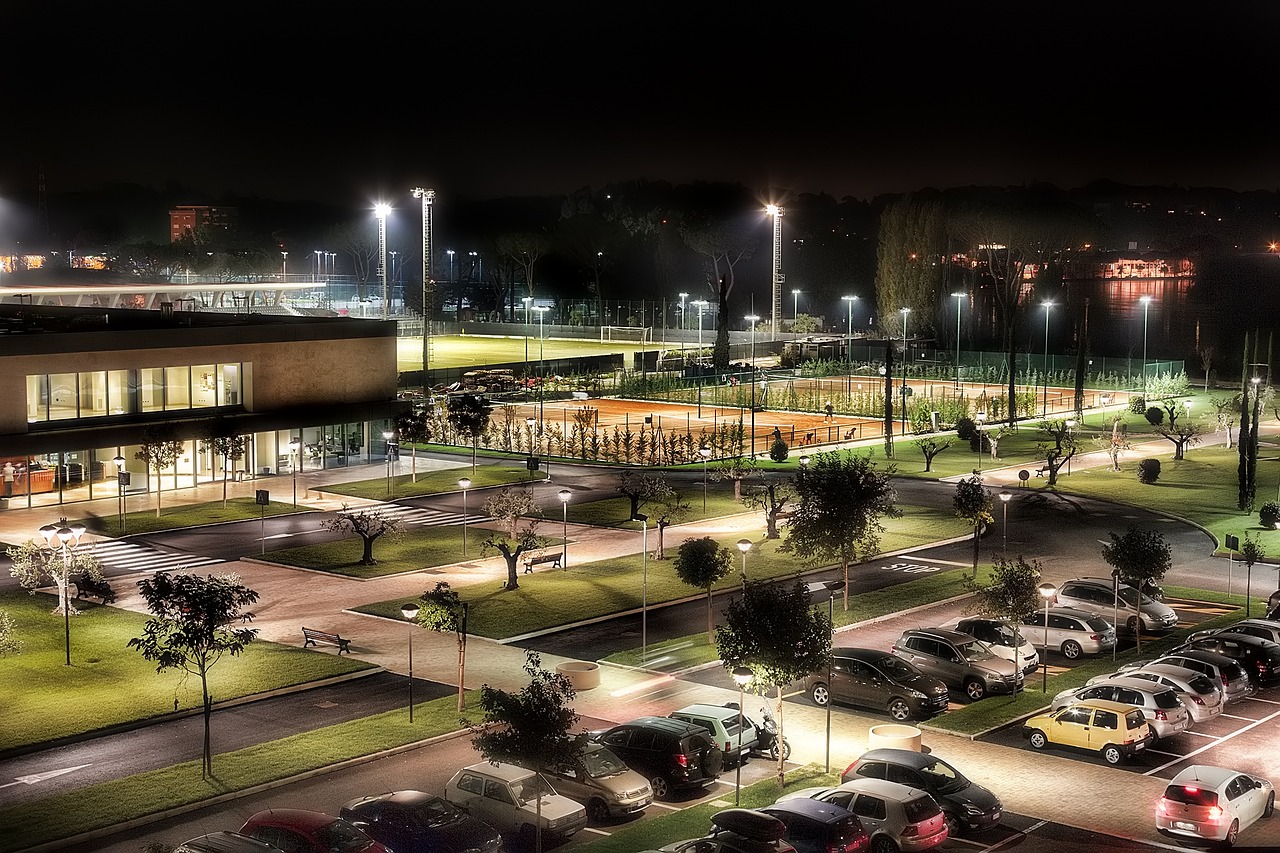Tennis has become a worldwide hit in recent years. With a multibillion-dollar industry to back it up, every match is a national sensation. Australia was the host of the best tennis has to offer, and what a spectacle it was. From large national complexes to smaller, privately owned businesses, providing the best means for athletes to train is all about attention to detail. Professional courts are separated from the rest when you invest in quality materials and technology. Light is what enables those results to shine bright and outshine the competition!
1. Outdoor LED solutions

Outdoors provide a great start for people who love to train in the open. The fresh breeze, smell of nature and open space allow some players to experience the freedom of movement. Without any walls to make anyone feel cramped, outdoor tennis courts are ideal for mild climates. When a small business wants to grow its profits, they need all the customers it can get, and with proper outdoor LED tennis lights, people will flock to get on the court.
LED lights save money by using up to 70% less electricity than regular HD lights. The power-up time for LED lights is also next to non-existent, whereas the older version needed up to half an hour to get going. Positioning is equally important as the number of lights outdoors. Having high poles at the corners outside the court and two in the middle is a good start, but when you have multiple tennis courts side by side, you can also implement lights in between. Even numbers are key to proportional lightning and to providing the best outcome. Outside lights need to be durable and weatherproof. When installing lights for an artificial pitch, it is recommended to have high poles at the corners and two in the middle, with even numbers of lights in between for proportional lighting.
Rain, snow, strong wind, hail and other weather effect can damage or hinder the performance of older and weaker models. Modern exterior LED lights are specially designed for outdoor use, are resistant and can last you for several years. One thing to bear in mind here is that you will need to provide regular LED light cleaning, as dust and dirt will accumulate over time and can dim the light output.
2. Indoor LED tennis lights
Inside courts provide more control over your surroundings. Closed spaces protect against the elements, so your light doesn’t need to be durable as its outside counterparts. Mounted on fixed stalls, portable or rotatable, indoor LED lights need to have a much larger scope and power, so they can shine on each dark corner. Enclosed spaces don’t have the luxury of outside light, so any LED light you choose must be strategically placed and up to the task.
Opting for the best quality LED tennis court lights and placing them accordingly ensures that your hall is well-lit so its players can train and enjoy the professional surrounding. Light glare needs to be at a minimum due to limited indoor space. Hanging from the roof, suspended or as stalls, whatever you choose to implement, will be better than leaving corners neglected. In tennis, a single millimeter can determent if a ball of in or out, and adequate lighting helps with proper judgement.
3. Standards and numbers
Choosing the number, type and positions of your LED tennis lights, outdoor or indoor, is not an esoteric science. Copying proven practices from official and professional courts works just fine on a smaller and private scale. A standard tennis court and field needs around 35.000 to 45.000 lumens to be properly lit up, with no dark spots. Achieving this is possible with eight sources of LED light where each of which has 300 watts of strength or more.
For comparison, professional matches in Australian Open have around 60.000 lumens, but these are necessary due to the worldwide professional nature of the competition. Older lights use about 1500 watts or more of electricity to produce the same effect, so you can easily see how replacing them would benefit you at least five times each. The photometric study is the name of the science behind measuring exactly how much light sources you need for any given surface, inside or out.
Today you can find modern software with built-in photometric science calculations inside, and you can input your field specs and get the desired answer. Also, if you ever face the decision to either build a new court or adapt an existing one, go with the latter. Replacing existing lights with new ones is more feasible and budget-friendly.
Lights, camera, and action does not only apply to Hollywood. Tennis courts need a quality source of lumens that can perform in each environment, so the audience can enjoy the spectacle. Players will bathe in the light, as they focus on the ball and all the tiny details which follow and are necessary for victory. Think of LED lights as a fresh coat of paint over your tennis court, and you will soon realise their importance.

